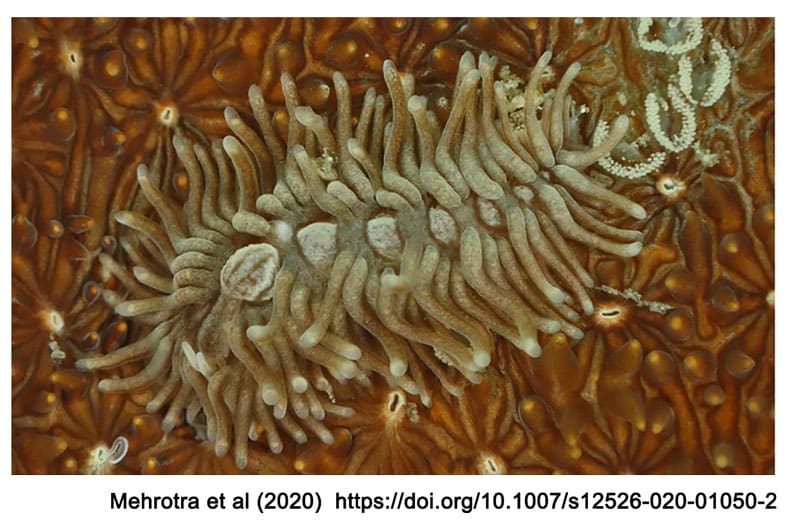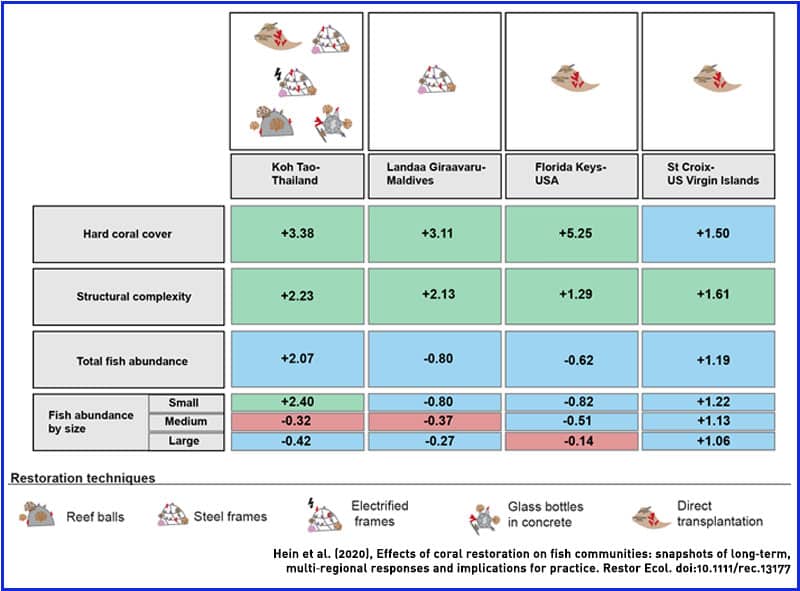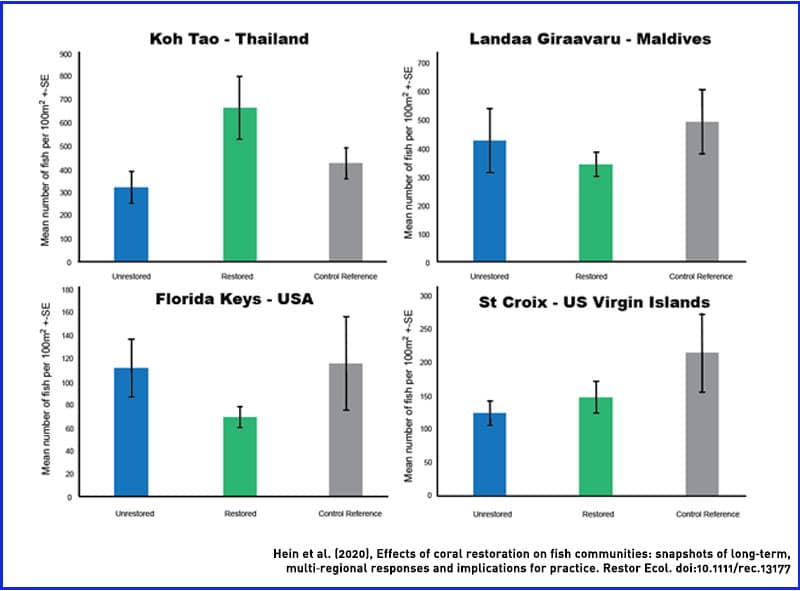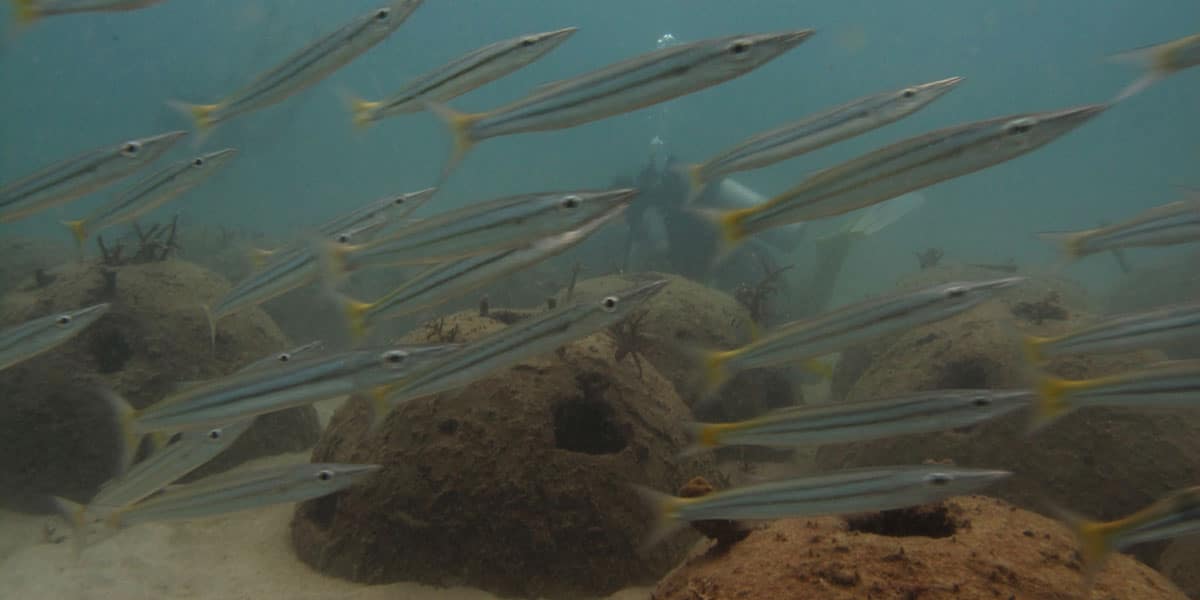A New Species of Coral-Eating Nudibranch
A new species of coralllivorous nudibranch has just been discovered by our friend and colleague, Dr. Rahul Mehrotra. The new species, which he named Phestilla viei, was described in a recent article in the journal Marine Biodiversity, titled “A new species of coral-feeding nudibranch (Mollusca: Gastropoda) from the Gulf of Thailand.” Not only does this paper provide record of this new species, but it also helps to clarify the systematics of the genera, which currently contains 8 coral-feeding species that have been revised several times over the last few decades.

This study was conducted as part of Rahul’s PhD, which has yielded several other impressive firsts for the world of sea slugs, including the observation that there are corals which feed on sea slugs, as well as three other first records of species found from Koh Tao; including Unidentia aliciae in 2019, as well as Arminia occulta and Armina scotti in 2017.
The new species, Phestilla viei, was first found on the island of Koh Tao, Thailand by Conservation Diver board member, Spencer Arnold, who was a co-author on the paper. He found the first individual on a coral of the species Pavona explanulata, a resilient coral species which is becoming more prevalent on the island as it replaces some of the less robust species in the face of climate change and localized anthropogenic stresses. The novel species was named after local nudibranch enthusiast and citizen scientists, Mr. Vie Panyarachun, well known for his vast contributions in recording and curating sea slug records from Thai waters.
After the first observation, Rahul and his team conducted a series of surveys to locate more individuals and evaluate their ecology, anatomy, and genetics. All of the individuals found were on the same species of coral, implying that they are an obligate parasite of the sceleractinian, Pavona. Because of this obligate relationship, the morphology of the nudibranch is such that it closely resembles the coral, making it very difficult to find. Rahul and his co-authors stated in the paper that the easiest way to find them is to actually look for the feeding scars and egg trails, and then to look for the individuals making them.
Another amazing trait which makes this cryptic species so difficult to observe is that it actually ‘steals’ symbiodinium (the unicellular algae which power the coral) and integrates them into their bodies rather than digesting them, in a process termed “kleptosymbiosis.” Although this species is a corallivore, it does not appear to be a major threat to coral populations, as it was never observed to eat the entire coral, and no overpopulations or outbreaks have been documented.
Although this was the first scientific description, observations of the species have been made in other parts of the Western Pacific, including Indonesia, Madagascar, Papua New Guinea, and the Philippines. Now that more divers know about this species, and where to look for it, surely it will be observed in many other countries over the next few years.
After reading the article, we had some questions for Dr. Mehrotra, so we interrupted his work to interview him about his findings and current projects.
Q1: This is a very interesting finding, when did you first become aware of these species, and how did you first spot it?
I came across reference to a similar species in a couple of references, however with very little corresponding information. After finding a paper documenting this from Hong Kong feeding on Pavona decussata, I considered the possibility that we may have this on Koh Tao. The truth is, I simply needed to share this paper with Spencer who used his remarkable skills in a matter of weeks to find a similar species feeding on a different prey at Koh Tao.
Q2:As this is the fourth new species you have described for the region, do you think Koh Tao is a particular hotspot for sea slugs, or do you expect other regions in the Gulf to have similar levels of biodiversity?
This is the fourth species of nudibranch to be described from Koh Tao, which has indeed been the home of much of the sea slug research from Thailand over the past decade. However, our data from other locations suggests that, while Koh Tao does seem to offer a diversity of species distinct from what is commonly found elsewhere in the Gulf, the richness of discoveries is largely due to the focused study in the area. Many places in Thailand appear to host species that are awaiting a closer investigation.
Q3: You named this nudibranch after Mr. Vie Panyarachu, how has he influenced your work over the years, or the status of nudibranchs in Thailand in general?
Vie Panyarachun is a keen recreational diver and naturalist who has played a remarkable role in curating records of sea slug diversity in the country. His work as a citizen scientist has helped create a repository of species as well as playing an active role in sharing the world of sea slugs with the SCUBA diving community in Thailand.
Q4: why do you think it is important that populations of nudibranchs in the region are recorded and monitored?
Nudibranchs and other sea slugs have been shown to play a variety of roles economically and ecologically, however few of these have been investigated thoroughly. Monitoring sea slug diversity has already led to remarkable documentation on the hidden impacts of climate change and species invasions. The importance of monitoring sea slugs in the Western-Pacific, home to the most biodiverse marine environments in the world, allows us to dig deeper into the complex ecology of the region. In a time where hundreds of invertebrate species are known to have been regionally displaced or gone extinct only to be discovered/rediscovered after the fact, detailed monitoring of such understudied groups may allow us to catch large scale threats before they take hold. Many sea slugs have been associated with very specific prey organisms, and thus the fate of any given species is also intricately tied to the resilience of its prey. The species we describe here for example has been found exclusively on a single species of coral, with similar species of coral either hosting their own distinct species of nudibranch, or none at all. Many reef building corals such as the prey of P. viei are susceptible to threats such as coral bleaching. We have little evidence at present to suggest that populations of P. viei would could show enough dietary plasticity to shift hosts to a more resilient prey should these threats escalate.
Q5: What are you currently working on, or towards, regarding sea slugs in Thailand?
I am in the process of completing my work from Koh Tao, documenting further ecologically relevant observations. My work on sea slugs will be transitioning to other fields soon too, so as to provide a more solid framework for further research on sea slug biology in Thailand.
We want to pass our sincerest congratulations to Rahul for this valuable and important work, and wish him all the best in his future ventures, which we follow very closely and support in any way we can. We also want to congratulate Spencer Arnold on his find, and his invaluable assistance to this study, he has an eye for finding tiny sea slugs like no one else. We also want to congratulate Mr. Vei on the species being named for him, and for all his contributions to the field over the years.

Does coral restoration also enrich fish communities?
When we perform coral restoration activities, the goal is to not only increase the amount of living coral, but to enrich the entire ecosystem, including the fish communities. Restoration programs tend to focus on bringing back living coral, under the idea that by bringing back the foundation of the ecosystem, the rest of the reef organisms will follow. But is that truly the case?
A recent publication headed by Dr. Margaux Hein investigated whether long-term coral restoration programs did in fact bring back fish communities, and the results were not as significant as some restoration practitioners might expect. The study, titled “Effects of coral restoration on fish communities: snapshots of long‐term, multi‐regional responses and implications for practice,” was published in April in the Journal of Restoration Ecology. It analyzed four coral restoration sites, all of which had been ongoing for 8 years or longer, two from the Caribbean and 2 from the Indo-Pacific. The studies where completed in the same locations as her publication on the effectiveness of long-term coral restoration, and builds upon the lessons learned from that study.
The study assumed, like most of the coral restoration industry, that efforts to bring back corals and structure would also attract a wide range of reef fishes, thereby restoring the function and value of the ecosystem. Not only are the corals essential for the survival of the fishes, but the fishes (especially the herbivores and detritivores ones) help to maintain the dominance of corals on the reef over macroalgae. In general, more fish biomass is thought to represent a healthier ecosystem, and also leads to more value for local economies through tourism and fisheries. So, reef restoration efforts should be concerned with the abundance and biodiversity of fish communities when evaluating the effectiveness of their efforts.

In Dr. Hein’s study, she looked to see which of the various restoration methodologies most positively affected fish communities, and hypothesized that locations which had the highest structural complexity of corals would also have the highest abundance and diversity of fishes. She and her team carried out transect surveys for fish at four locations around the globe, and looked at three site types for each location; restored reefs, unrestored reefs (adjacent to and degraded to a similar extent as the restored reefs, but with no actions being implemented), and control reefs (those with little relative degradation and no restoration, but similar in composition). Each location had three replicates per site type, for a total of at least nine replicates per location studied. They categorized reef fishes into three groups by size (small, medium, and large), and by genera.

Although in the last study they found significant differences between the coral communities at each location, results regarding the fish communities where far less significant. In fact, only one site, the one at Koh Tao, operated by our partners at the New Heaven Reef Conservation Program, showed any increase in fish biomass or diversity, and it was not statistically significant. At Koh Tao, the restored sites had the most fish, a 2-fold increase, but only among the smaller fishes, and only of the damsel fish family. At other locations, the fish abundance did not vary greatly between sites, and in the Caribbean was actually highest at the control sites (again, not significantly). When it came to medium and large fish, they were generally lower in the restored sites than the unrestored or control sites.
The study went on to point out that, on Koh Tao, a variety of methods where utilized, including transplanting corals to the natural reef as well as to artificial substrates, whereas at all the other locations only one strategy was utilized. Thus, interning again that taking a holistic approach to restoration may be preferred over focusing all time and resources to just one method, as in the other programs assessed. By increasing the structural diversity and available habitat on the reef through the creation of artificial reef structures while also increasing the amount of living coral on natural reef areas more consistent benefits are realized.

In the end, the study did not find significant differences in fish community biomass and diversity, contrary to the original hypothesis. The authors discussed possible reasons for this, and gave recommendations to future studies and restoration programs for improvement. The study concluded that:
“Coral restoration efforts aiming at increasing fish abundance and diversity on degraded reefs should strive to substantially increase both coral cover and structural complexity by maximizing coral diversity, and use a diverse set of artificial transplantation substrata where possible. Importantly, there is likely no “one size fits all” approach to restoration when it comes to maximizing the response of fish communities. Rather, to realize such a goal requires a location-specific understanding of the community, that will need to be incorporated at all stages of the design of the restoration efforts, from site-selection, planting design and monitoring regime. “
We at Conservation Diver wanted to know a little bit more about what Dr. Hein felt was the most vital aspects to coral restoration, as she has published many studies on the various aspects of it, and has visited many reef restoration programs around the world, here is what she said:
Q1: Your study found that there was little in the way of significant improvements at the restored sites at all of the locations studied, despite the hypothesis to the opposite. What do you think are the main things that restoration is missing that would improve fish abundance and biodiversity?
The limited response of fish to restoration I observed might very well be due to my study-design and the fact that I only got a “snapshot” of what fish population looked like at each location, with a one-off survey. Fish move (haha), so properly documenting their response to restoration would require repeated surveys from the very beginning of the restoration efforts. Still, I think there are ways in which coral restoration programs could be better designed to improve fish abundance and diversity:
1. Site selection should be based on local knowledge of fish communities’ dynamics and connectivity
2. Restoration designs should maximize 3-dimensional structural complexity
3. Restoration designs should improve coral diversity
Q2: Since you have dived at many different artificial reefs/restoration projects around the globe, what technique do you think works best to attract a diverse population of fishes?
I think the key is habitat structural complexity and diversity. Fish are attracted to places for food and shelter, and complex structures provides refuges of different sizes as well as diverse feeding surfaces. Maximizing habitat complexity can be done by adding artificial structures and maximizing coral diversity.
Then obviously, site selection is very important, making sure that the restored area is somehow connected to healthy fish populations – the ideal scenario being for the restored sites to be within no-take marine protected areas. The more the restoration efforts can be integrated within resilience-based management, the better success we’re likely to see in the long-term.
Q3: Which fishes do you think are most important to attempt to attract when planning a restoration project?
That’s a tricky question- I think it all depends on the initial goals of the project. If initial goals are focused on enhancing fish nursery habitat for local fishermen, then it’s important to specifically look at the response of fish species that are important for these fisheries. These may have specific food and shelter requirements that the restoration efforts can accommodate. If initial goals are focused on restoring ecological function and resilience, then we need to look at the response of functionally important fish species and restoring key ecological processes such as herbivory. These goals are not necessarily mutually exclusive, but better defining goals is important when planning and designing restoration efforts.
Q4: You have now written several papers and book chapters on coral reef restoration, what are the main lessons you have learned, that you think the industry needs to heed in order to be more successful in the future?
I would say that the most important lesson I have learned is that there is a lot more to coral restoration than growing and planting corals. In particular, it can be a useful educational tool that encourages tangible behavioral changes and improves the social resilience of local communities as well as the ecological resilience of the reef. But there is no “one size fits all” approach. To be successful it needs to be carefully planned and designed against specific long-term goals, integrate stakeholder engagement, and most importantly be integrated within a greater reef management plan that act on stressors such as MPAs, water quality and predator control, and the obvious elephant in the room: climate change.
We want to wish our sincerest congratulations to Dr. Margaux Hein for this valuable and encouraging study, and also a big congratulations to her co-author, and our board member Eloise "Elle" Haskin, on her first scientific publication! Surely many more are to come.
Also be sure to check out what Dr. Hein is currently working on by checking out her marine restoration and consultancy company website.



